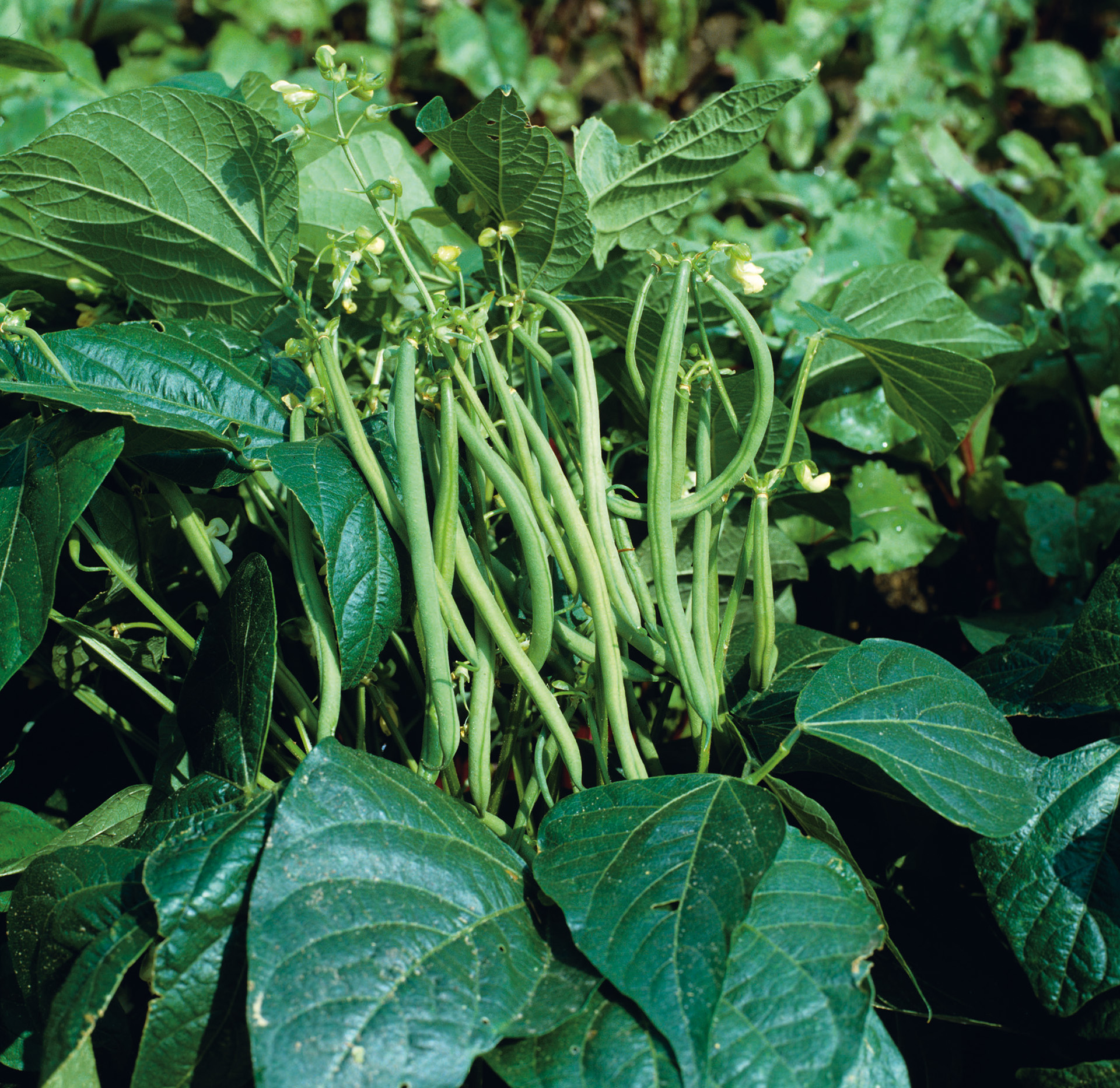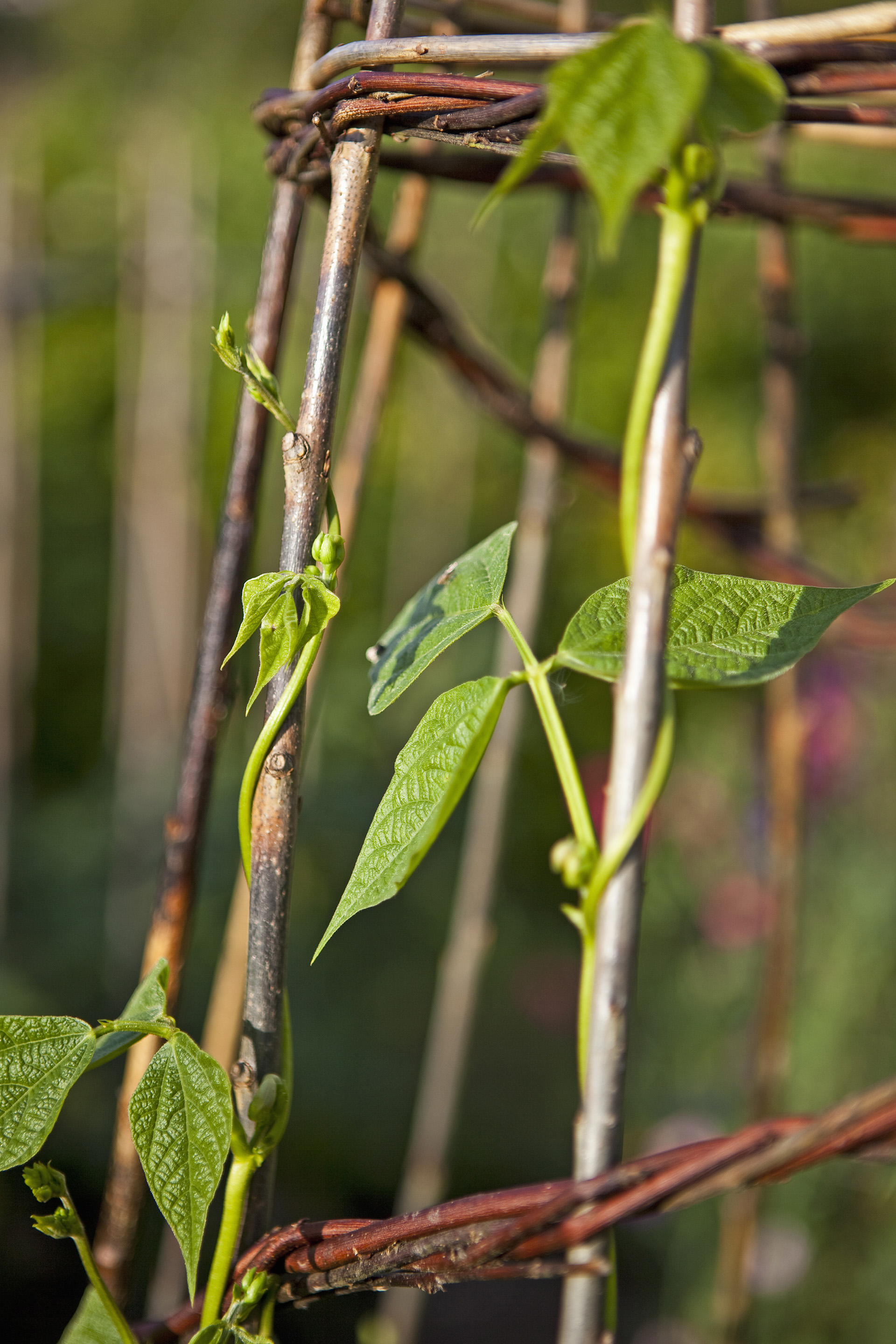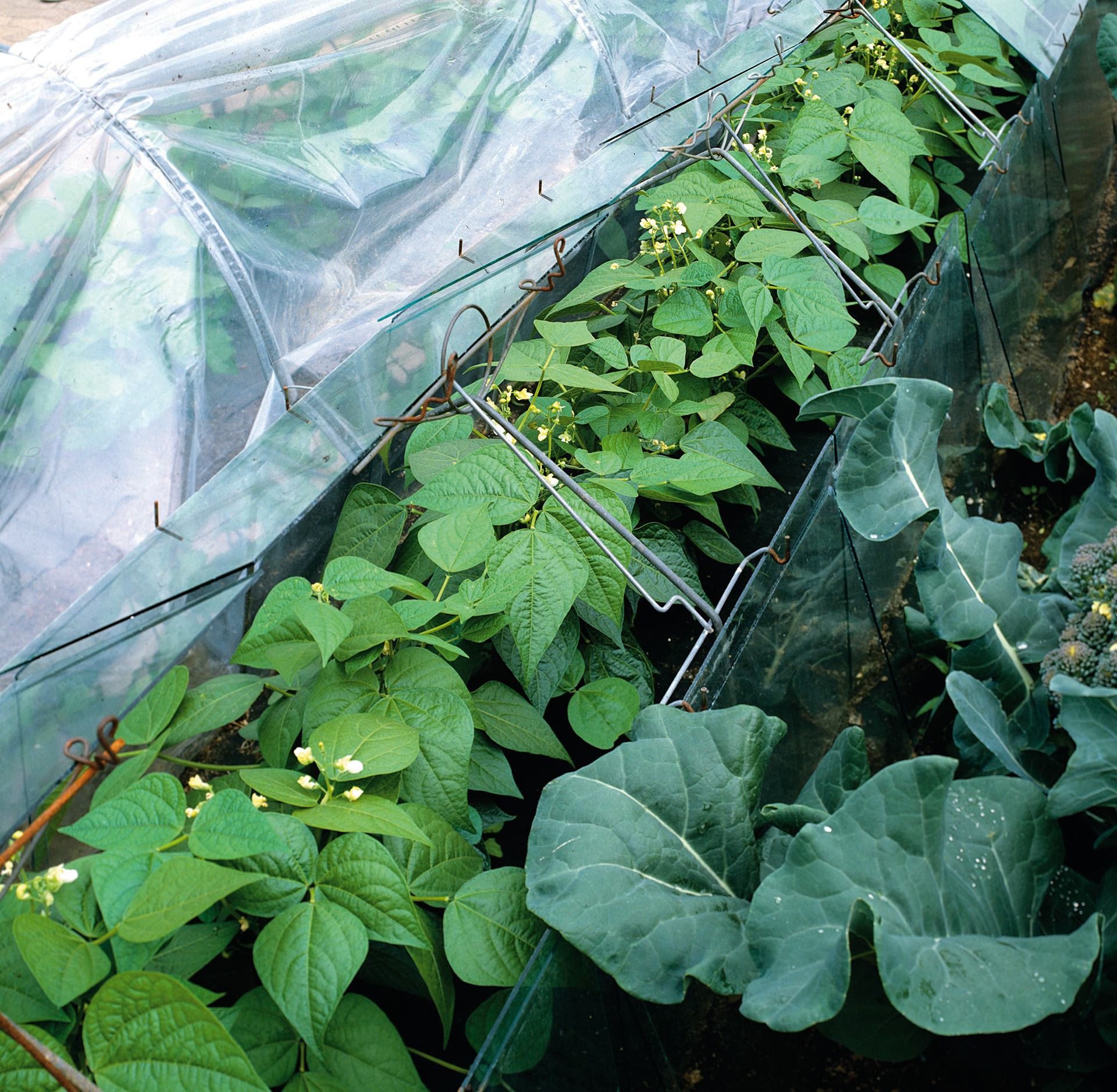How to grow French beans
Expert advice for growing your own climbing or dwarf French beans for a tasty and healthy harvest


If you want to know how to grow French beans, also known as haricots verts, there’s one thing that’s worth knowing right now: you can sow dwarf or bush French beans outside right through to mid summer for harvesting in fall.
Other types of French beans – climbing or pole French beans – will need planting in spring, but if you buy established plants later, these can continue cropping right through to September – perfect if you are looking for continuously productive kitchen garden ideas.
French beans are similar to snap green beans but have extra-slim, flavorful pods. They may be eaten fresh or cooked. The French green bean is thinner and thought to be more tender and flavorful than snap green beans.
Here's how to grow them, with advice from gardening experts.
How to grow French beans from seed

Chris Bonnett at Gardening Express says, ‘Ideally sow French bean seeds indoors around April, placing them on a windowsill where they can get plenty of sun. Move them outside in late-May, picking a spot that’s warm and sunny.’
'If you’re keeping your French beans in the right conditions, they’ll grow pretty quickly. You’ll need to give the climbing beans enough support to grow so don’t forget to attach a support soon after you’ve planted them outside. You can do this with bamboo sticks, just make sure they’re high enough, around 6ft/2m should be fine.’

If you’re looking for vegetable garden ideas that can be sown directly into the soil, French beans will suit. Melinda Myers, gardening expert, author, and host of The Great Courses’ How to Grow Anything DVD series, has the following advice.
Design expertise in your inbox – from inspiring decorating ideas and beautiful celebrity homes to practical gardening advice and shopping round-ups.
‘Wait until after the danger of frost has passed and daytime soil temperature (taken in the top inch of soil early in the day) is at least 60°F (15.5°C). This is when night temperatures are consistently above 55°F (13°C). Planting in cold soils decreases germination and increases the risk of pests.’
Make additional plantings every two to three weeks for a continuous supply of fresh beans. Make sure you have sufficient time from your last planting to the first fall frost so the beans have time to mature and you have time to harvest before the plants are killed by frost.’
Do French beans climb?
Climbing, or pole, French beans climb, as their name suggests – and can make great vegetable garden trellis ideas. They will need supports from canes, trellis, fence or obelisk, a height of about 6ft 6in/2m should be sufficient. Bush or dwarf varieties of French bean have a much stockier habit, don’t climb and don’t generally need plant supports.
Dwarf or climbing French beans?

Choosing whether to grow dwarf or climbing French beans really is down to personal preference. It depends on what space you have available in your plot and whether you want to go to the additional trouble of providing support for climbers. There are tasty varieties of each type and you might make your choice based on how you want to use them – whether you’re growing them to eat fresh as a green bean, or whether you intend drying the beans to preserve them for later use.
If space in your vegetable patch is limited, then climbing French beans are great small vegetable garden ideas, since they grow upwards rather than outwards. Dwarf French beans take up more of a footprint, but are quick growers and produce their harvest within a shorter time frame. They can also be grown in large containers. If you’re growing dwarf French beans you might decide to make successional plantings in order to maintain a steady crop through the growing season.
How long does it take to grow French beans?
According to Melinda Myers, ‘Beans planted from seed directly in the garden should be ready to harvest in 45 to 72 days depending on the variety and weather conditions. Check the back of the seed packet for the number of days from planting to harvest.’
Once you’ve got them going French beans are prolific producers. Harvest regularly, every day or two to keep the plant producing and for tender better tasting pods.
Don’t pick beans when wet because pods are easily bruised and this increases the risk of spreading disease.
What conditions do French beans need?
Both types of French beans, dwarf and climbing varieties, thrive in warm conditions, and won’t tolerate frost or cold conditions. You can protect young plants from cooler night temperatures with cloches or fleece covers as cold temperatures can be one reason why bean plants turn yellow.
According to Melinda Myers, ‘French beans need full sun and are best in loose well-drained soil. Provide sufficient water throughout the season as needed but do not overwater causing soil to be waterlogged.
'The top few inches of soil should be crumbly and just starting to dry before watering. An even supply of moisture throughout the season helps increase yield and quality. Mulch the soil with shredded leaves, evergreen needles or other organic material to help suppress weeds and keep the soil moist.’
Chris Bonnett of Gardening Express agrees and says, ‘French beans love moisture so it’s important that in drier conditions you’re still giving your plant an adequate water supply. You can also use a fertilizer with high levels of potash, something like liquid tomato fertilizer is ideal.’
On the subject of feeding, Melinda Myers adds, ‘Avoid high nitrogen fertilizer. Beans like other legumes can fix nitrogen from the atmosphere with the help of a soil bacterium.'

Can you grow French beans in pots?
Bush or dwarf French beans can be successfully grown as vegetable garden container ideas in a sunny, warm spot.
If you do choose to grow them like this, choose large containers and check the pots daily to ensure they don’t dry out. Soak the potting soil thoroughly every few days to encourage a strong root system, rather than giving them just a trickle of water every day.
Container-grown pole or climbing French beans don’t do as well as the bush varieties and are best grown directly or planted out into the garden.
When to pick French beans
You'll know when to pick green beans and French beans by the look and size of the pods. They will be ready to harvest between 50 and 60 days after planting, and when the pods are crisp and tender. If they have visible bumps, it indicates that the beans inside have developed and the pods may have become tough and stringy.
Try these recommended varieties of French bean

Melinda Myers recommends her favorite varieties to try:
Bush or dwarf varieties
- Mascotte – an award-winning bush variety perfect for containers. It produces lots of long slender pods that are held above the leaves making it easy to find and pick them.
- Rolande – deep green pods with delicate flavor and superb quality on bush type plant.
Pole or climbing varieties
- Emerite – long pods on a climbing plant (pole type bean).
- French Gold – yellow podded French beans that produce 7 to 9in pods with a delicate sweet flavor.
- Cobra – (pictured above) is a high quality bean with a long harvest period. Its long, round pods remain straight and have a smooth, bright green surface. It contains black seeds.
Karen sources beautiful homes to feature on the Homes & Gardens website. She loves visiting historic houses in particular and working with photographers to capture all shapes and sizes of properties. Karen began her career as a sub-editor at Hi-Fi News and Record Review magazine. Her move to women’s magazines came soon after, in the shape of Living magazine, which covered cookery, fashion, beauty, homes and gardening. From Living Karen moved to Ideal Home magazine, where as deputy chief sub, then chief sub, she started to really take an interest in properties, architecture, interior design and gardening.
